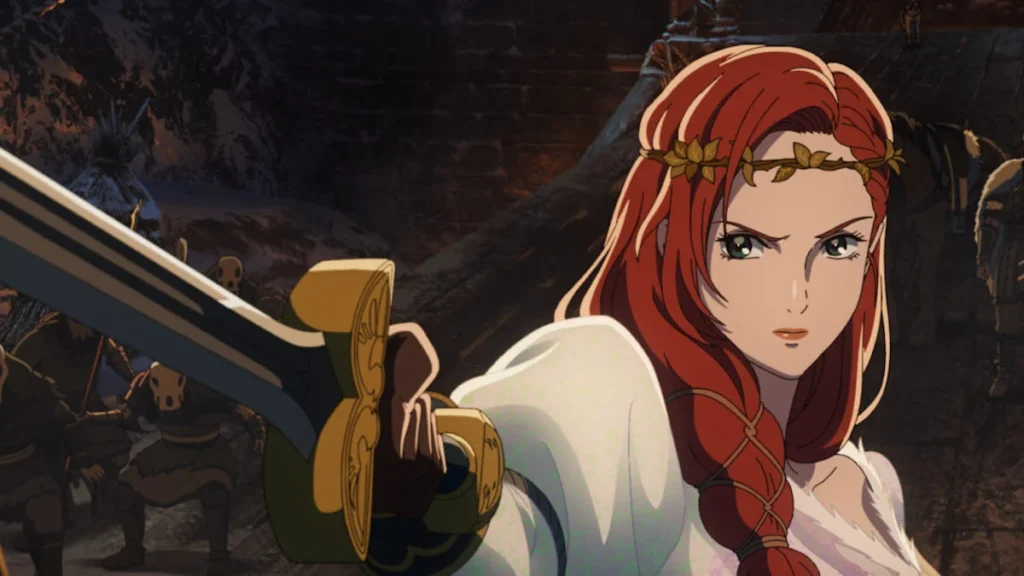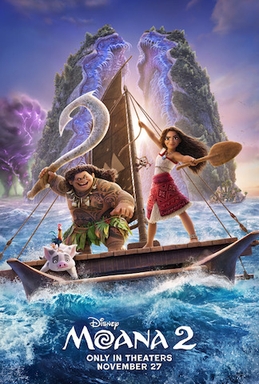Ne Zha II
Posted on August 21, 2025 at 5:26 pm
B| Lowest Recommended Age: | 4th - 6th Grade |
| MPAA Rating: | Not rated |
| Profanity: | Some schoolyard language |
| Alcohol/ Drugs: | Characters take magic pills |
| Violence/ Scariness: | Extended peril and violence, sad deaths of parents and brother, images of a destroyed village with charred remains, scary monsters |
| Diversity Issues: | None |
| Date Released to Theaters: | August 15, 2025 |

I’m not going to spend much time on the storyline of “Ne Zha !!” because it is extremely convoluted and because it is not really that important. “Ne Zha II” is a sequel, continuing the saga based on the Investiture of the Gods book written during the Ming Dynasty (1368-1644), itself based on folklore, myth, and real-life historical characters. The first film is now on Netflix. I’m not sure it will clear things up for you, though, unless you already have some familiarity with the underlying stories told over generations. I overheard some older Chinese-Americans in the audience laughing as they admitted they remembered hearing the stories as children but had a hard time muddling through the first film.
That doesn’t matter too much, as long as you can figure out who the good guys are and why they are fighting the bad guys, because you will be spending most of the time looking at what’s best in this film, the spectacular and stunning background and secondary character visuals, especially the monsters. The design of the main characters is not close to that level, the voice talent other than Oscar-winner Michelle Yeoh, is lackluster, and the convoluted storyline becomes more distraction than narrative.
The two characters at the heart of the story are the impish child demon Nezha (Yanting Lü) and the more mature Ao Bing (Mo Han). They were created together as a Chaos Pearl, birthed from the primordial essences of heaven and earth. In the first movie, they joined forces and their bodies were dissolved. As this one begins, Nezha’s teacher, the immortal Taoist deity Taiyi Zhenren (Jiaming Zhang), portrayed here as a foolish but devoted character, is creating new bodies for them from the petals of the sacred lotus, a difficult process that almost immediately goes wrong when Ao Bing’s still very fragile body is destroyed. Because it takes a while to re-create the lotus petal material for bodies, Ao Bing’s soul will dissolve unless he can find a temporary host, so Taiyi puts him inside Nezha’s body.
This leads to some complications as Taiyi takes the combined boys to get the potion needed to give Ao Bing a new body. The boy(s) will have to pass a series of tests to be given the potion by Wuliang (Deshun Wang), Taiyi’s brother. Brother and father-son relationships are very important in this story.
Taiyi gives Nezha pills to put him to sleep and let Ao Bing’s powers take over to pass the tests. Meanwhile, various conflicts and reunions happen with many other characters. And many, many fight scenes, one with a funny exchange involving characters disguising themselves as each other and — an issue everyone can relate to — the inability to remember a password.
NOTE: Stay for the credits for an extended extra scene that is one of the film’s best moments.
Parents should know that this film includes extended fantasy-style peril, action, and violence, with monsters. Characters are injured and some are killed, including beloved parents and a beloved young brother and family members who sacrifice themselves and an entire village burned down, with dead bodies turned to ashes. There are a few schoolyard-style bad words and some graphic potty humor and gross-out moments. Characters take pills to manipulate their powers.
Family discussion: Nezha is given an impossible choice. What should he have done? Were you surprised at who the villain turned out to be?
If you like this, try: the first film







